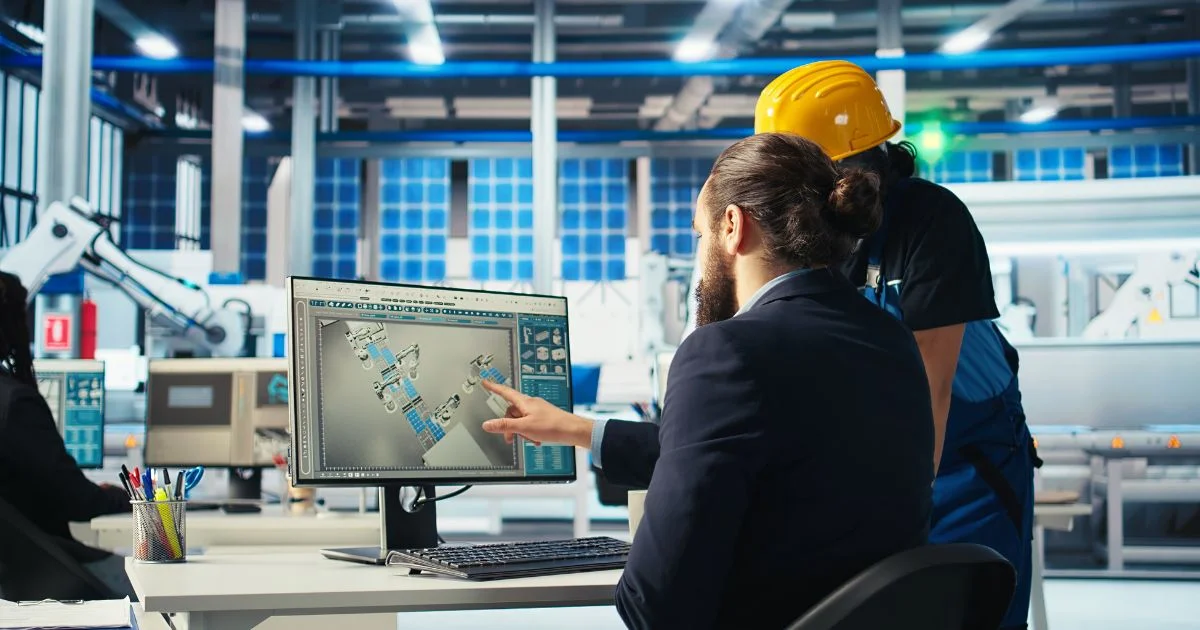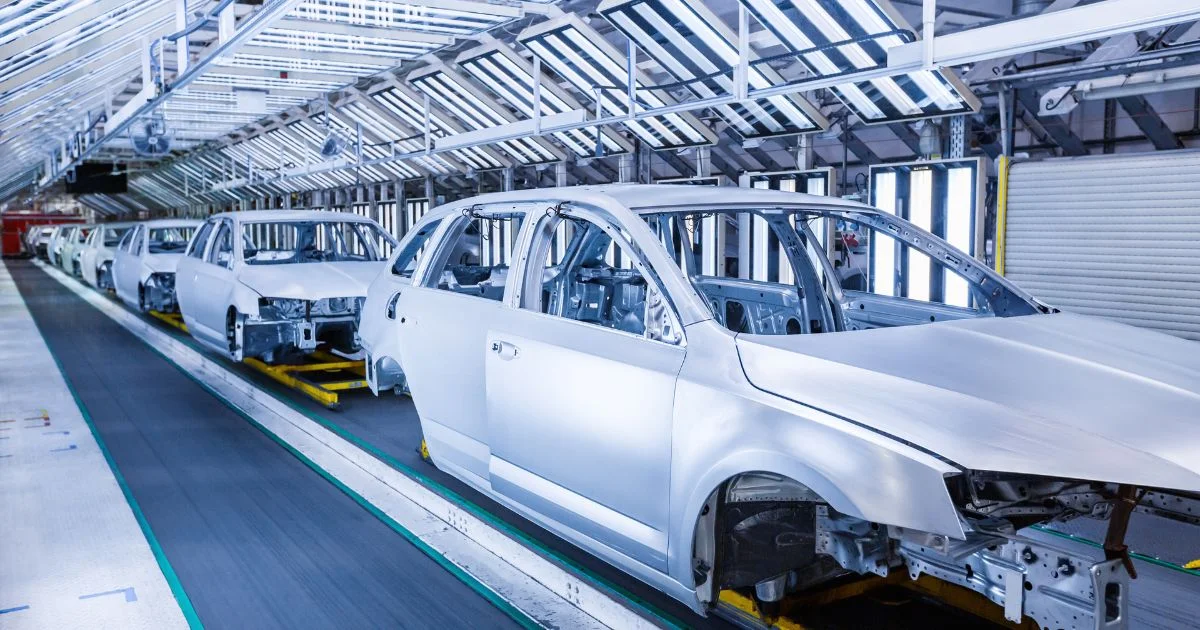
Your energy bills keep climbing, but your blow-off performance stays the same. Many plants buy great air knives but connect them to old blowers. Or they upgrade the blower but keep worn-out ducting.
The best blow-off results come when all parts work together. System design matters more than expensive individual parts. When components don't match, you waste energy and get poor results.
Air knives need steady pressure to work right. Nozzles need consistent airflow for good performance. When these parts get the wrong pressure or flow, the whole system fails. This creates energy waste and maintenance problems that get worse over time.
Peak performance happens when every part operates at its design point. This means matching blower output to actual system needs. It means sizing ducting for smooth airflow. It means choosing air delivery devices that work with your pressure and volume.
Why Part-by-Part Upgrades Don't Work
Most plants treat blow-off equipment as separate purchases. Need better drying? Buy a new air knife. High energy costs? Get a bigger blower. Maintenance issues? Replace the ducting.
We've found that blow-off systems work best as complete operations. Research supports this integrated approach delivers better results. Each part affects the others. Basic part swapping doesn't give consistent results. Think about building a car. You wouldn't use the best engine with a weak transmission and old tires. Each part might work alone, but they weren't made to work together. The same thing happens with blow-off equipment.
Blowers lose efficiency when system resistance doesn't match their design. A blower built for specific pressure won't work well if your system needs different specs. The unit works harder, uses more energy, and still gives poor airflow.
Air delivery devices work best within specific pressure ranges. Air knives need smooth, steady flow. Cannon nozzles need higher pressure at lower volumes. When these devices get wrong airflow, results suffer no matter how expensive the parts are.
Ducting often controls overall system performance. Too small pipes create pressure drops. Too big ducting allows flow problems. Good ducting design considers size, bends, and smooth internal surfaces.
Temperature changes affect mixed systems more than complete ones. Different materials expand at different rates. This creates leaks and connection problems over time. Complete systems use matching materials that expand together.
Mixed parts create big problems when plants use multiple air points. Different air knives from different makers need different pressure. This makes some work well while others work poorly. The whole system becomes unbalanced.
Old equipment makes things worse. Worn blowers don't work like new ones. When you connect new air knives to old blowers, results disappoint. The old blower can't give the new parts what they need to work right.
Engineering Complete Systems for Best Results
Good blow-off starts with understanding total system needs. This means calculating pressure drops through all ducting, fittings, and delivery devices. Then selecting a blower that works well at that specific operating point.
Our direct-drive blowers eliminate belt-driven variables that change over time. The motor shaft connects directly to the impeller for reliable power transfer and predictable performance. This makes system design more precise.
Flow distribution becomes important when multiple air delivery points connect to one blower. Well-designed headers and branch ducting ensure each air knife gets proper airflow. This eliminates weak spots that happen when some delivery points starve others.
Pressure management requires understanding how losses build up through the entire system. Each elbow, transition, and length of pipe reduces pressure at the final delivery point. Complete design accounts for these losses upfront.
Variable demand applications need systems that adjust performance well. When production changes, complete systems with variable frequency drives can adjust airflow across all delivery points at once. This maintains efficiency at any operating level.
Complete systems start up faster because all parts work the same way. Testing becomes simple when everything follows the same rules. This gets plants running at full power sooner.
Record keeping gets easier too. Instead of many different manuals from different companies, you get one set of papers. This helps maintenance teams learn faster and fix problems quicker.
Maintenance Benefits of Complete Design
In our experience, coordinated maintenance schedules become possible when all parts follow the same design approach. Instead of tracking different service intervals for multiple suppliers, maintenance teams can use complete programs for the entire system.
This approach delivers both efficiency and reliability. Parts standardization reduces inventory problems. When blowers, ducting, and air delivery devices use common mounting systems and connections, plants stock fewer different parts.
Troubleshooting becomes easier with complete systems. Performance issues can be traced through logical steps because all parts operate within known limits. This eliminates guesswork when dealing with mixed-vendor installations.
Training needs decrease when maintenance teams focus on one manufacturer's approach. Technicians develop deeper knowledge with complete systems rather than surface-level understanding of multiple technologies.
Upgrade paths stay clear with complete systems because new parts can be added using established design principles. This eliminates engineering challenges that come with mixing different manufacturers' approaches.
Warranty problems go away with complete systems. One company handles everything when something breaks. No more arguing about whose part caused the problem. This means faster fixes and less downtime.
Watching for problems works better too. All parts behave the same way, so you can track them the same way. This helps catch issues before they cause breakdowns.
Energy Efficiency Through System Integration
Properly matched blow-off systems use less energy than mixed installations because every part operates at optimal efficiency. When blowers run at design pressure and flow rates, electrical consumption decreases while air delivery increases.
Power factor improvements often result from right-sized complete systems. Oversized blowers operating at reduced loads run at poor power factors. This increases electrical costs. Complete design ensures electrical efficiency across all operating conditions.
Heat recovery opportunities emerge when system parts are designed together. Waste heat from blowers can be captured for process heating. This improves overall plant energy efficiency beyond just the blow-off application.
Variable frequency drives become more effective in complete systems because they control the entire blow-off process. This allows plants to match air delivery to actual production needs. Energy use drops during lighter production periods.
Blower-driven air systems can be more cost-effective than compressed air for many blow-off applications. Complete design often reduces compressed air requirements while delivering adequate performance.
Real Applications in Key Industries

Automotive plants use complete blow-off systems for paint drying and leak testing. Coordinated air delivery ensures consistent results across all production lines.
Food and beverage facilities rely on complete systems for drying cans and removing moisture before labeling. Uniform airflow prevents quality issues that affect packaging appearance.
Pharmaceutical operations need complete systems for drying vials and maintaining clean environments. Integrated design ensures consistent air quality and flow characteristics.
Electronics manufacturing uses complete blow-off systems for circuit board cooling and particulate control. Precise airflow control prevents damage to sensitive components.
Implementation Strategy
Assessment starts with understanding current performance gaps and energy use patterns. Document existing blow-off effectiveness and energy costs to establish baseline measurements.
Phased implementation works well for plants that can't shut down for complete system replacement. Begin with the most critical applications where performance improvements will have the biggest impact.
Load analysis helps determine whether existing electrical infrastructure can support optimized systems. Complete blow-off systems often need different electrical features than mixed installations.
Staff training should emphasize system thinking rather than individual part operation. When operators understand how blower performance affects air delivery, they can optimize the entire system. This reduces mistakes and improves daily results.
Performance monitoring becomes essential during system integration. Track energy use and blow-off effectiveness as complete parts come online. This quantifies improvement and identifies remaining optimization opportunities.
Making the Investment Case
Initial costs for complete systems are typically higher than mixed approaches. But the total cost of ownership favors the complete approach. Energy savings provide payback before considering maintenance and productivity improvements.
Hidden costs of managing multiple suppliers and incompatible spare parts often make complete systems more economical. Single-source responsibility eliminates vendor coordination issues and warranty complications.
Future expansion becomes easier with complete systems because additional parts can be added using established design principles. This eliminates engineering challenges that come with mixing different manufacturers' approaches.
Plant flexibility increases when blow-off systems can be easily reconfigured for different products or production layouts. Complete systems provide this adaptability because all parts work within the same performance envelope.
Getting Started with System Integration
Your blow-off system should function as one coordinated operation where every part enhances the others' performance. When blowers, ducting, and air delivery devices are engineered together, plants achieve more consistent results while improving energy efficiency.
The difference between adequate blow-off and exceptional performance often comes down to system integration rather than individual part quality. Plants that embrace this comprehensive approach see improved results while simplifying their operations.
Ready to explore how complete system design can transform your plant's performance? Integrated solutions eliminate the trial-and-error approach while delivering more predictable results.

